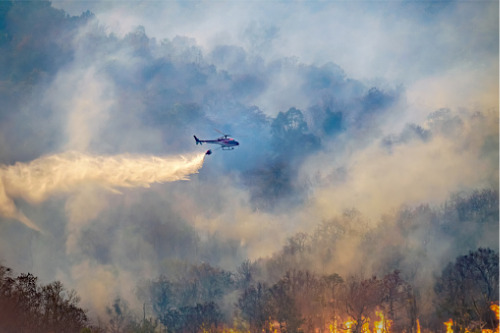

The report, made in collaboration with the Bushfire and Natural Hazards Cooperative Research Centre and the International Institute of Applied Systems Analysis, is Zurich’s 17th post-event review of a disaster and the first Post Event Review Capability (PERC) in Australia. It was written by disaster resilience experts Dr Adriana Keating and Professor John Handmer.
The report delved into the risk reduction and preparedness measures that were in place before the 2018 to 2019 Tasmanian bushfire event. It also showed successes in community response and recovery, and identified opportunities to further build resilience not only in Tasmania but also across the country.
Read more: Zurich continues COVID-19 vaccine campaign
Based on data about the previous bushfires, the report identified several factors contributing to bushfires in Tasmania.
The report noted that Southwest Tasmania is a sparsely populated and remote corner of the globe. The Huon Valley Land Use and Development Strategy, adopted by the Huon Valley Council in 2007, described the physical and environmental setting of the Huon Valley as particularly susceptible to bushfire.
The presence of volatile Eucalyptus and the steep topography have resulted in several major bushfires in the region’s history. Furthermore, bushfire risk may be increasing due to landscape change as former grazing land is repurposed to forestry plantation.
Many studies have found that climate change is increasing the frequency and severity of wildfire across Tasmania, according to Zurich’s research.
“The influx of new residents is resulting in new development in rural areas, which is increasing exposure. GHD reports that these lots are often located right on the forest boundary, are difficult to access, and lack water supplies sufficient for fire suppression,” the report said.
“In southwest Tasmania, the prevailing socio-economic conditions and demographic trends may be increasing the vulnerability of people and businesses to bushfire,” the report said. “With regard to the vulnerability of businesses, it is important to note that poor economic growth in the region indicates that many businesses are already struggling. The community residents that work under these economic conditions are particularly vulnerable when bushfire impacts the region.”
Zurich’s recommendations to build better bushfire resilience focus on risk reduction and preparedness, emergency response, and community response and recovery.
“Create an adaptive bushfire risk management plan, with a high-quality model of current and future bushfire risk,” the report said. “Communities should be at the centre of resilience and preparedness programs, and all potential impacts should be considered, including smoke pollution.”
“Clarify bushfire protection priorities, including defining when environmental assets should take priority over infrastructure. Contribute to the national conversation on the impact of bushfire smoke on health. Embrace that there is no single solution to ‘solve’ the problem, and the approach requires comprehensive resolutions,” the authors wrote in the report.
“Prepare and plan for a longer phase of community response, including evacuations. Ensure that local governments are planning for emergencies together and incorporate cross-LGA secondment agreements for emergency situations,” the report said.
“Clarify and codify the role of the community sector in emergencies and resolution processes and regularly review the strategy for making the best use of emergency volunteers. Identify and implement lessons regarding the provision of recovery grants. Provide support to complete the learning and improvement cycle after event reviews.”
Additional recommendations can be found in the full post-event report.
